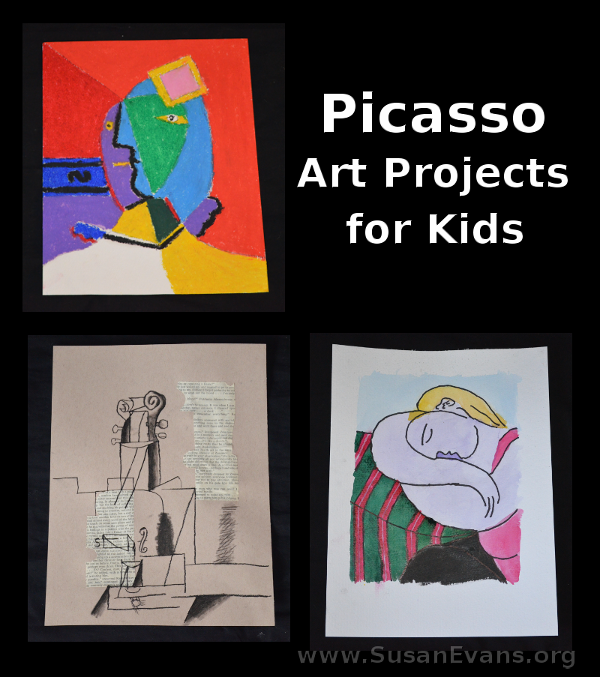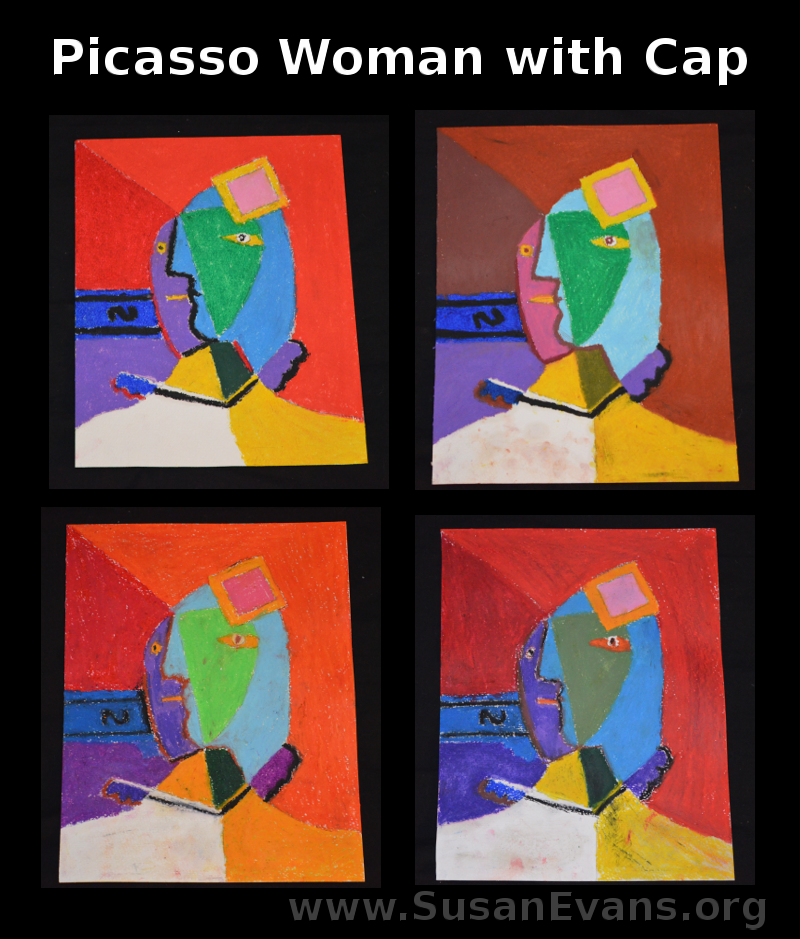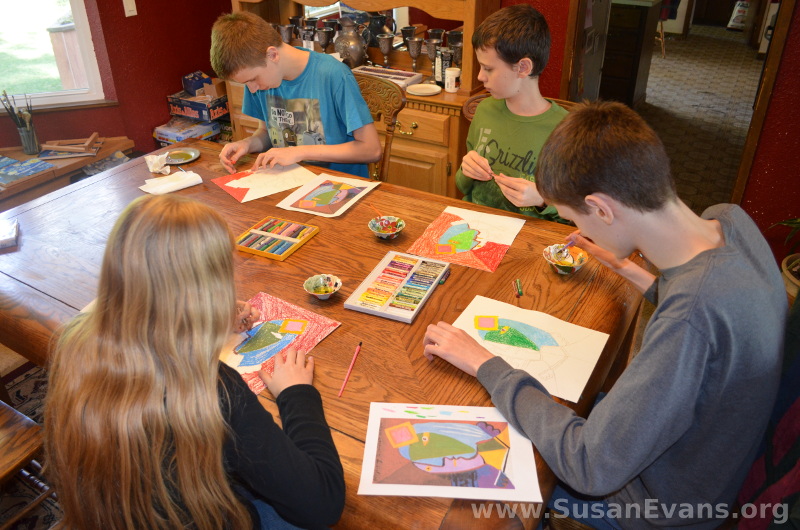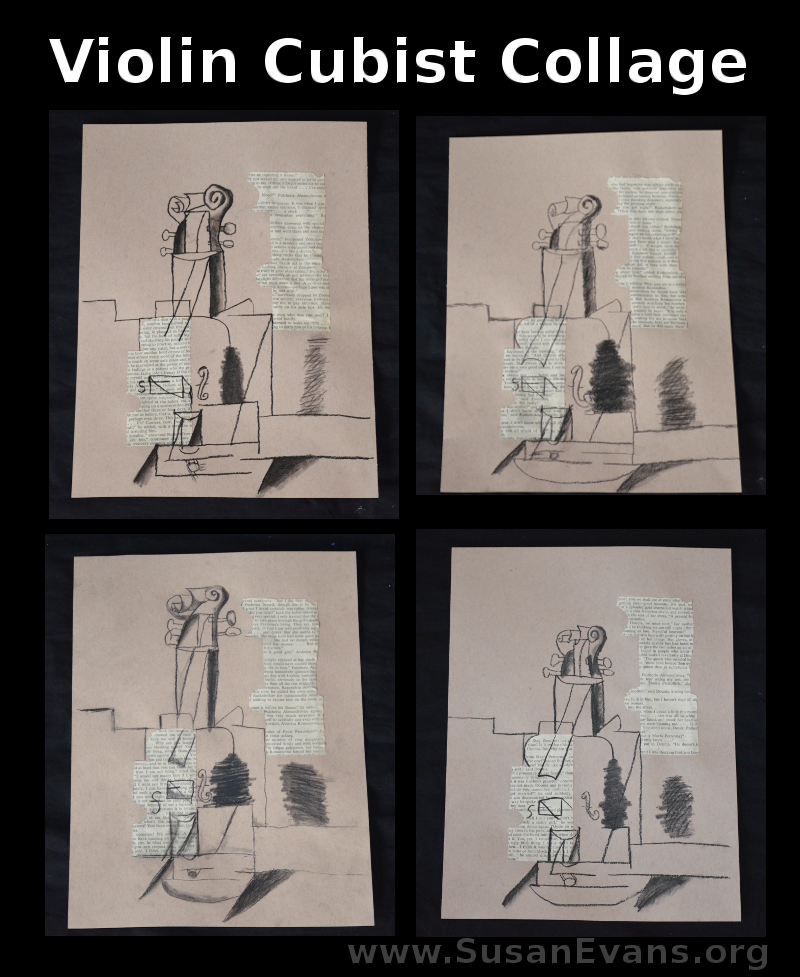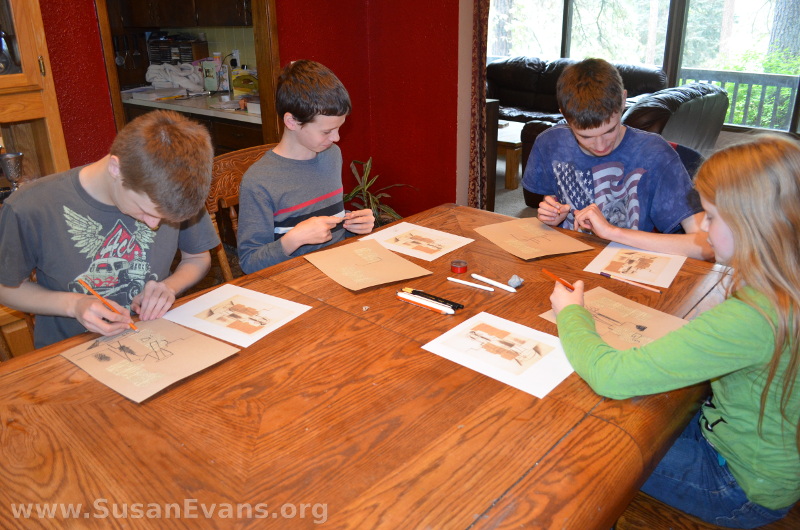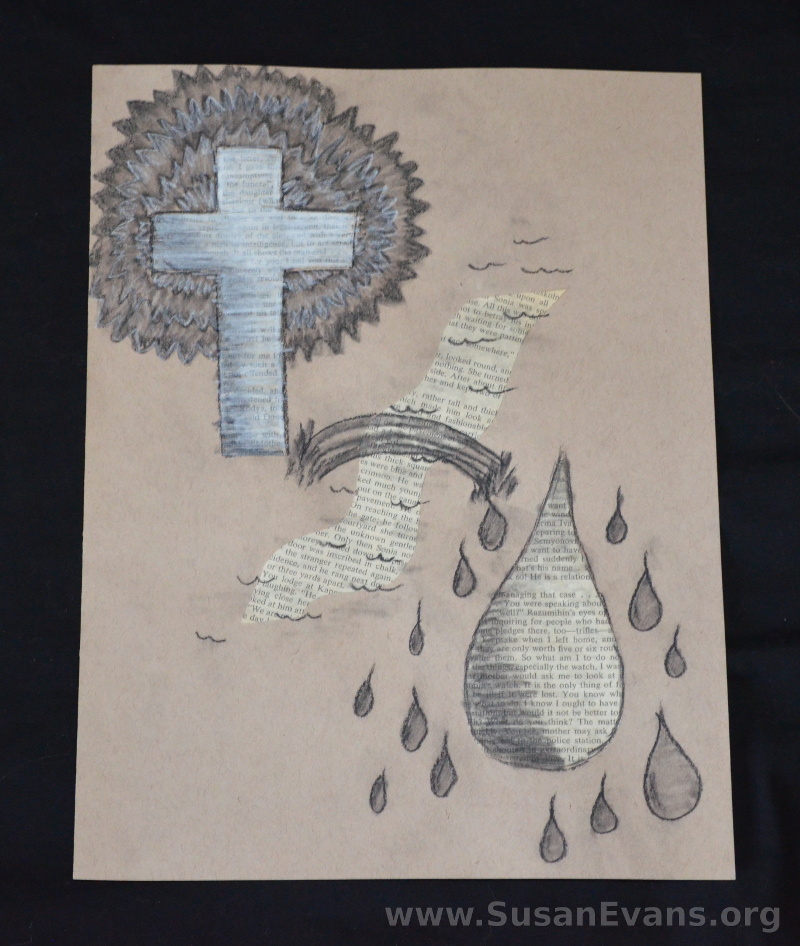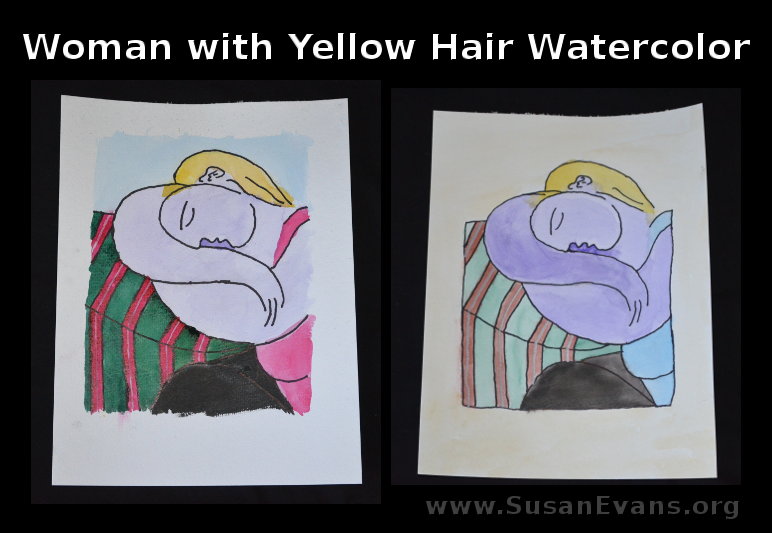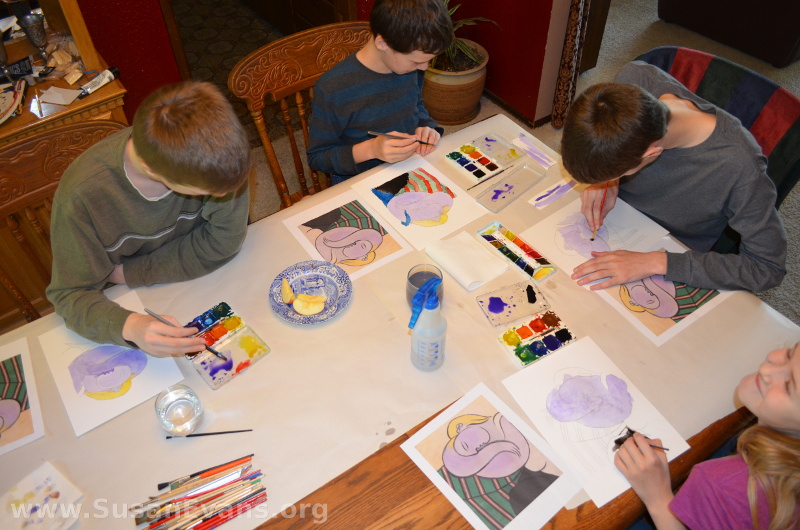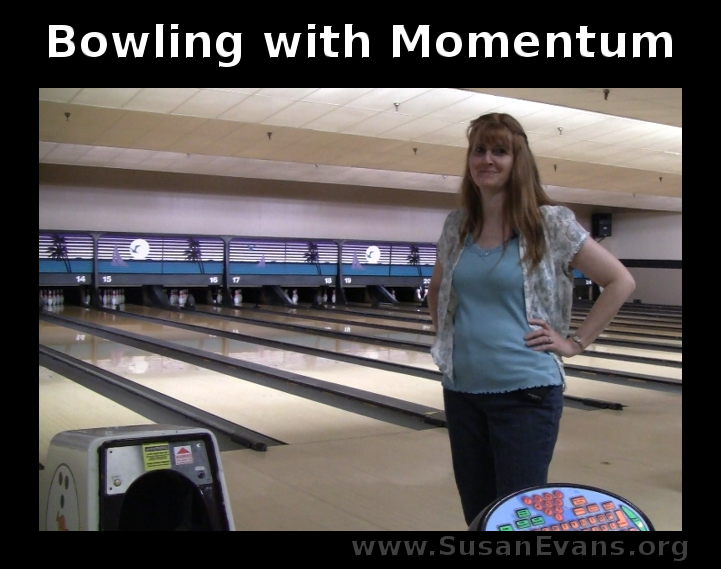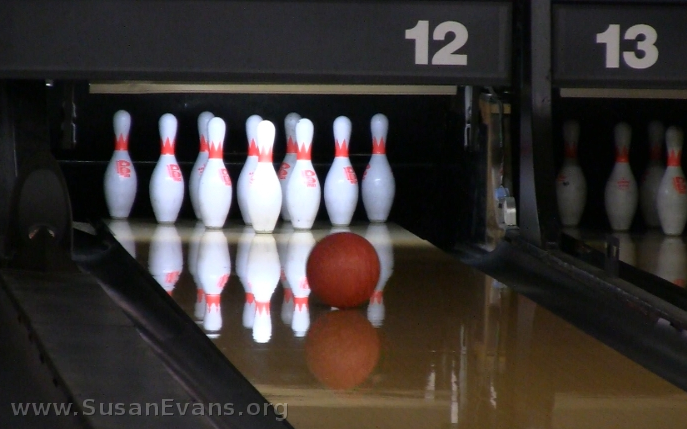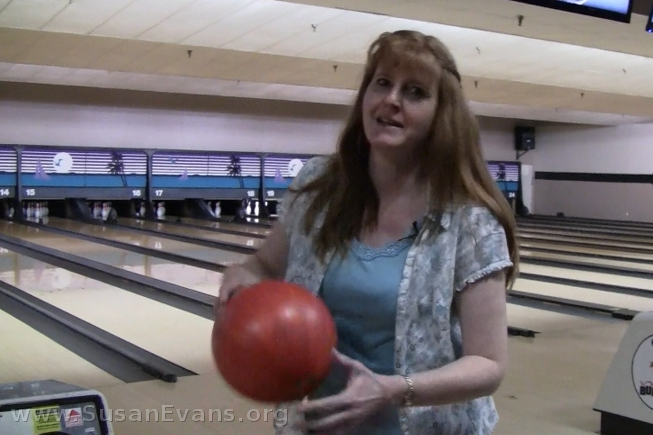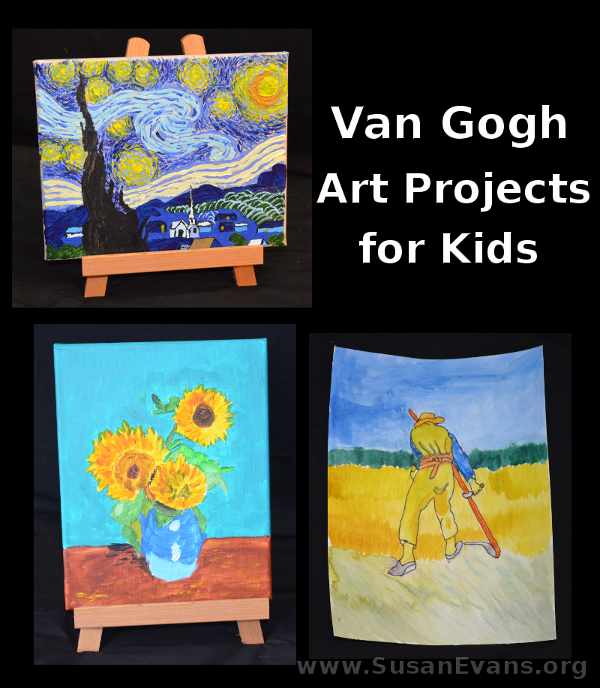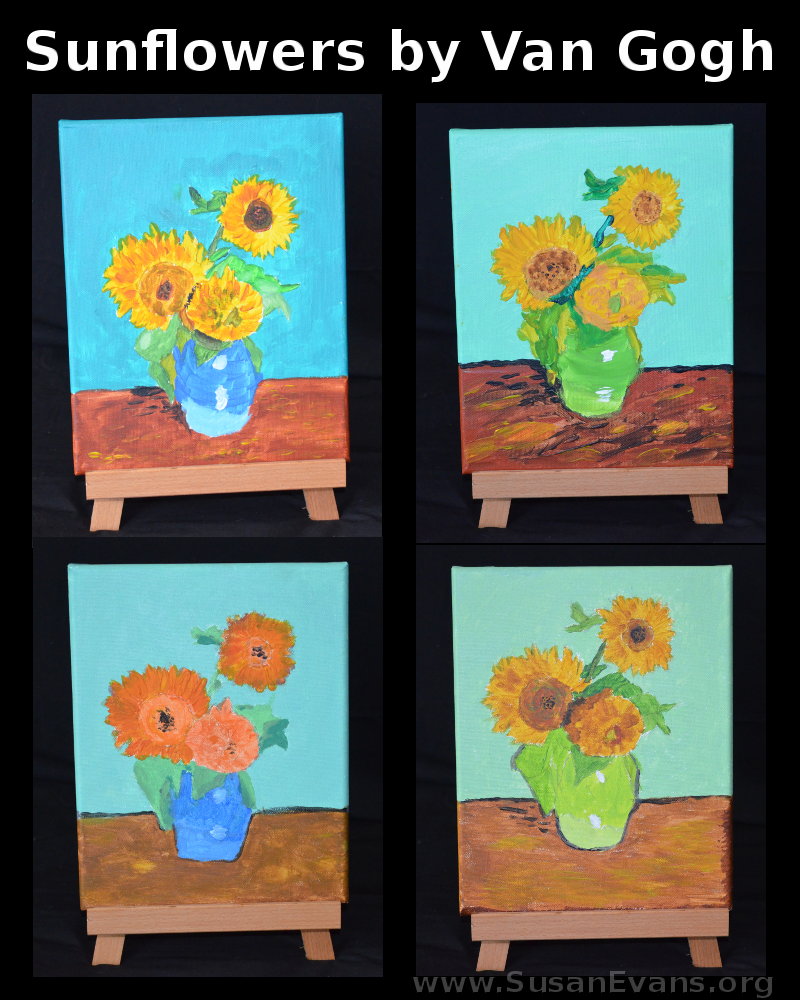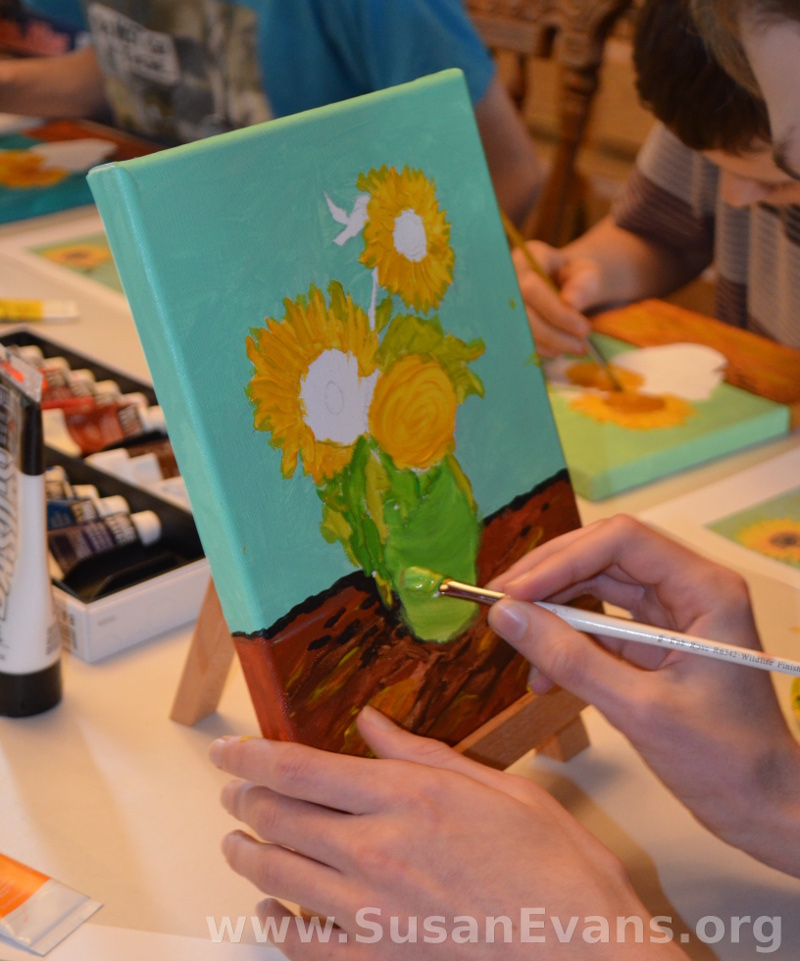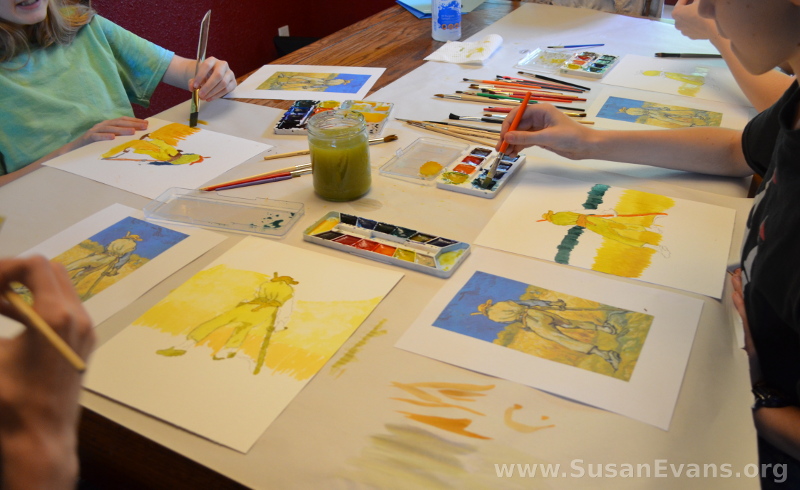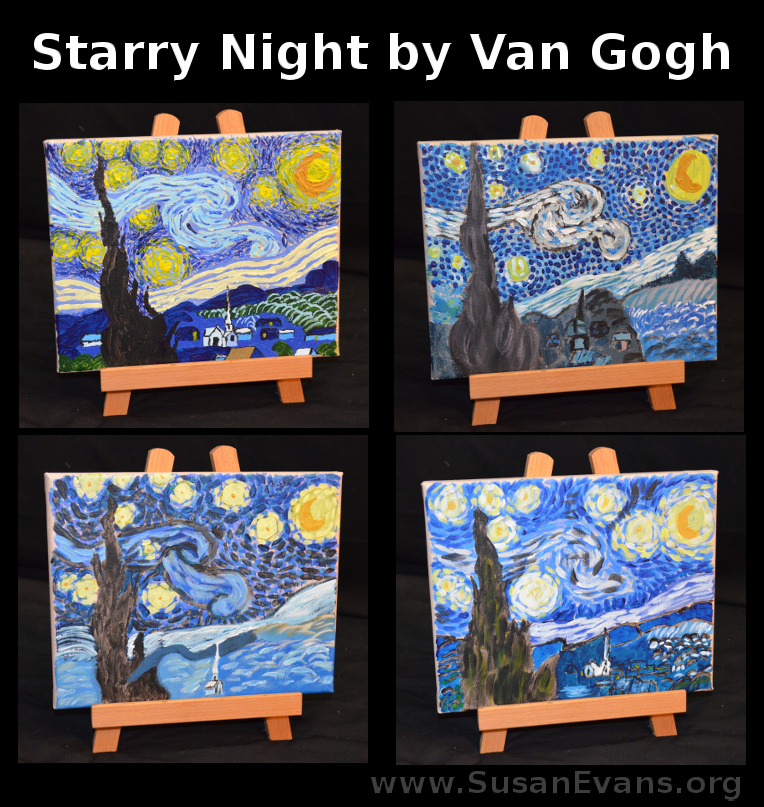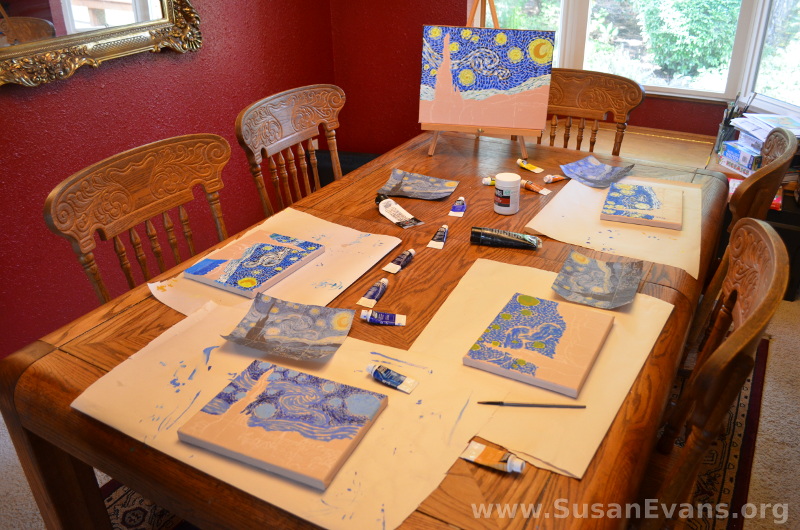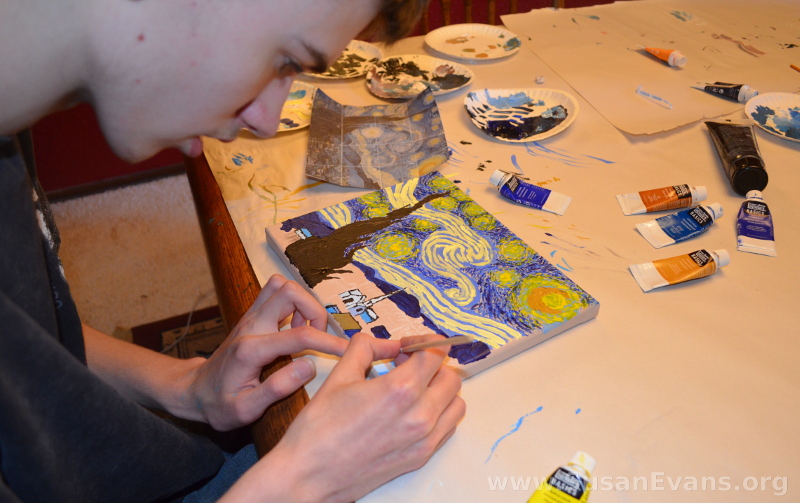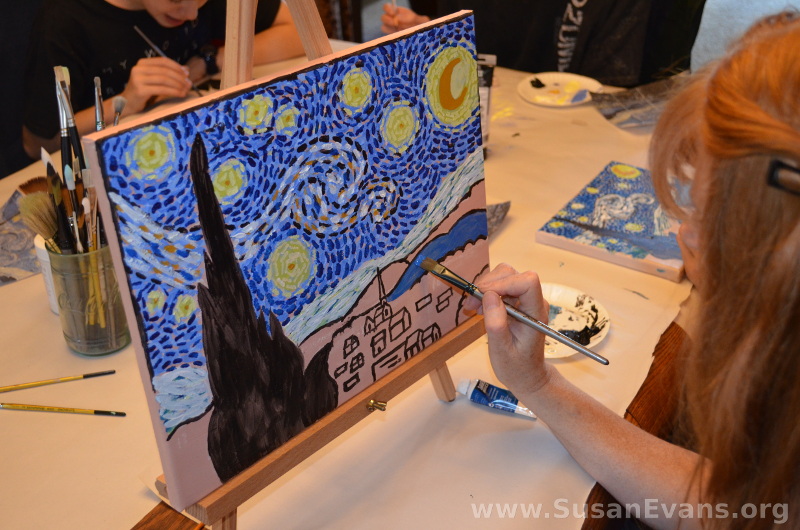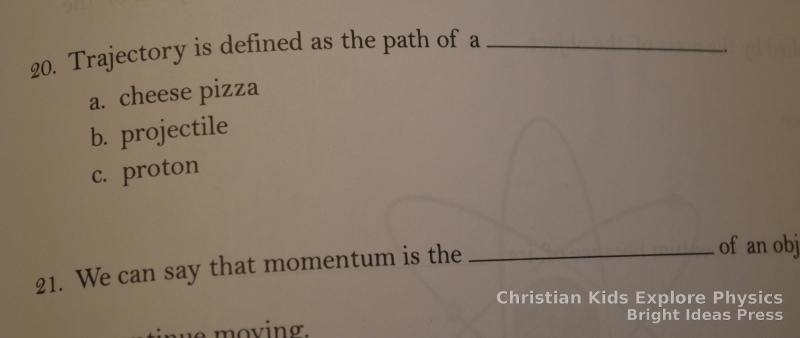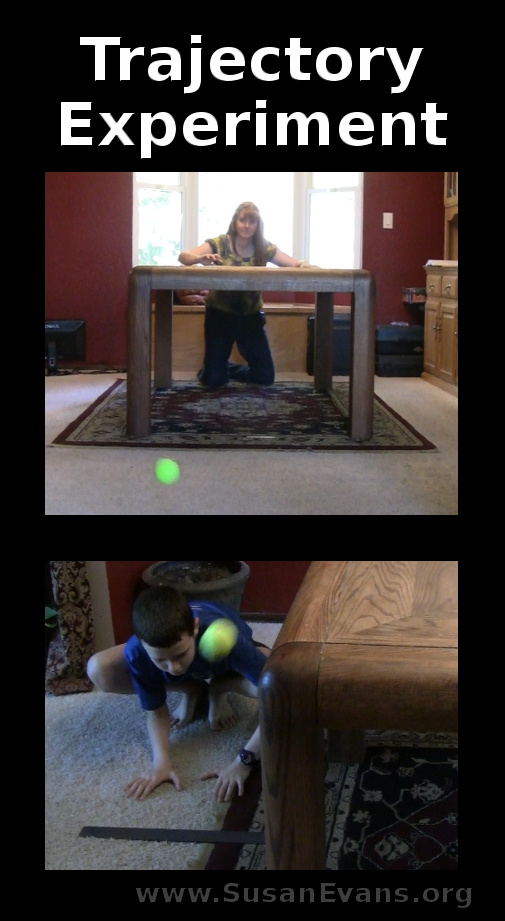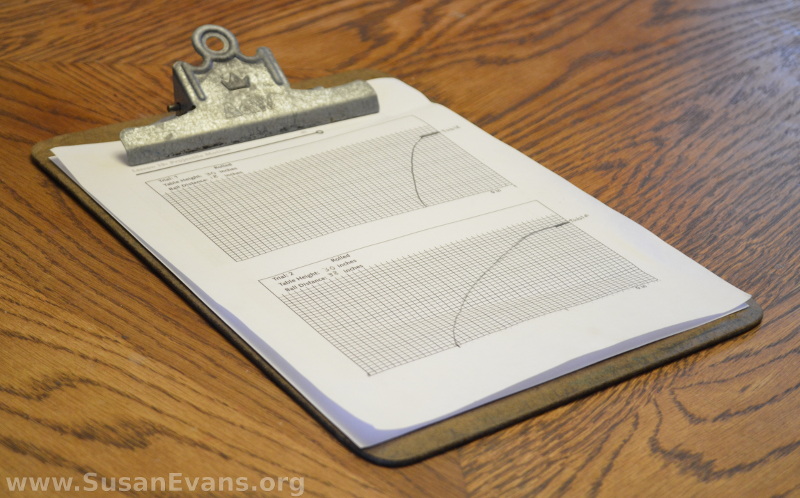This post contains affiliate links. I was given access to the class to blog about it, which I was very glad to do.
This is the fifth week of Mixing with the Masters, and we are creating several Picasso art projects. The first is with oil pastels, the second with charcoal (mixed media), and the third with watercolor. Picasso was one of the founders of the Cubist movement, where objects are broken up and reassembled as abstract art. Picasso also invented the collage, where various different materials make up the artwork.
Woman with Cap Oil Pastel
The first art project for Picasso was a “Woman with Cap” oil pastel. My children enjoyed coloring such bright colors with their oil pastel crayons, and then going back over it with olive oil. Alissa (the art instructor) provides a printable to transfer onto the watercolor paper to enable your young artists to get the bizarre de-constructed shapes. Is this woman looking to the front or to the side? It’s almost an optical illusion.
I placed the oil in little Asian dipping sauce dishes that my sister got me for Christmas one year.
The Violin Cubist Collage
This collage was created by gluing old book pages in the shape of the figures in Picasso’s famous “The Violin” collage. The instructional video shows you how to re-create this famous charcoal sketch around the two pieces of book pages.
My children’s art skills are increasing as Alisha instructs them how to blend and shade this famous artwork. The other charcoal drawing we did in this series was Leonardo da Vinci’s charcoal wing.
I invented my own charcoal and book-page collage. It shows the despair of the soul without Christ, and how His death on the cross bridged the gap to restore our relationship with God and bring us life and joy rather than despair.
The river is the gulf separating sinners from a holy God. The love of Christ bridged the gap for us by paying for our sin on the cross.
Woman with Yellow Hair Watercolor
Yes, the woman’s skin is supposed to be purple. Picasso was so weird. One of my sons watercolored this “Woman with Yellow Hair” with light purple arms and face, and another chose to go for the darker purple. We changed the color of the shirt from white to “any other color” to make each of their watercolors unique.
I hope you enjoyed our Picasso art projects. In next week’s Mixing with the Masters art class, we will be doing Georgia O’Keefe!
